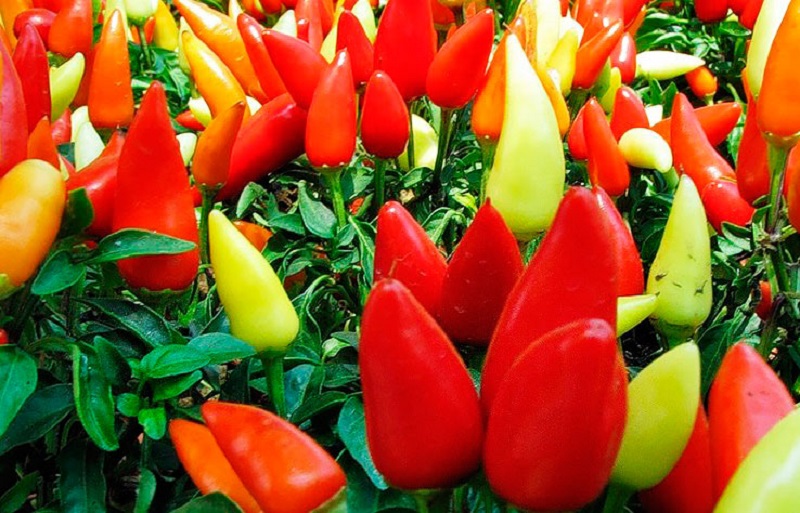 Pepper is becoming an increasingly popular agricultural crop that is grown in the latitudes of our country. The number of varieties is increasing, thanks to the efforts of our breeders.
Pepper is becoming an increasingly popular agricultural crop that is grown in the latitudes of our country. The number of varieties is increasing, thanks to the efforts of our breeders.
As you know, varieties, in the presence of which there are common characteristics, are included in varieties. Thus, varieties were identified, with growing fruits up. This phenomenon can be met not often. The above review can make it clear about the right choice of variety, to obtain a positive result, a good harvest.
Content
Hot Pepper Varieties
Spicy species find their very frequent application in the manufacture of seasonings, in order to bestow piquancy in the culinary business. Such species are planted anywhere: in the open area of the garden, in greenhouses and even at home. External data, growing up a cone of excellent peppers are also used to achieve decorative goals.
Fiery volcano
They have a classic cone shape. Their color varies from green to deep red. The fruits themselves, however, are rather dry. Their structure is usually not more than 1 mm. The weight of each pepper is about 15 - 20 g.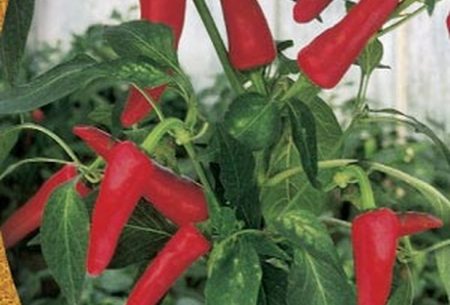
Growing "Fiery Volcano" is permissible in the beds and at home on the windowsill in pots. Peppers grown at home are a real decoration of the interior. If you decide to cultivate in an open area of soil, the seeds are sown for seedlings in February. If at home, then - all year round. After 110 - 120 days, as the seed was sown, active fruiting begins. Harvest one plant from 1-1.5 kg.
The Queen of Spades
The variety in appearance is similar to a bouquet of flowers, it has a rich color palette: violet, red, yellow, orange, green. They grow in length to 10 - 15 cm. They have a conical shape. The weight of each fruit is 10 - 15 g.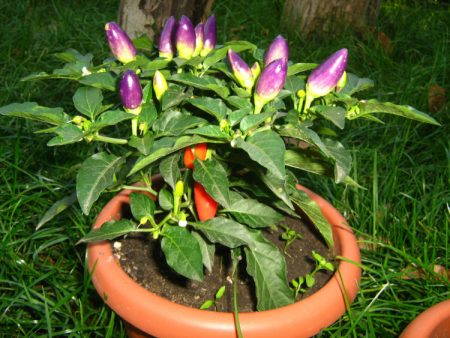
Very often, amateurs drop him off in apartment conditions during the off-season. Thus, the variety serves as a decoration, and as a seasoning. Those who plant the “Queen of Spades” on open ground or in a greenhouse sow seeds for seedlings in February or March. Fruits begin to ripen 120 days after sowing. The yield from each bush is about 380 - 500 g.
Constellation
Variety "Constellation" has a lot in common with The Queen of Spades in the color and shape of ripe fruits. The bush grows to 60 - 70 cm and its productivity is about 180 - 250 g.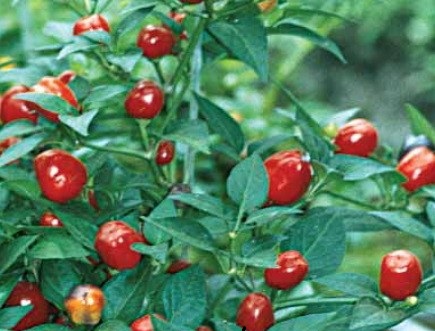
135 to 150 days usually pass from sowing to the start of harvesting of the first crop. It can also be grown at home for any seasoning.
Ryabushka
And this variety is more reminiscent of a berry bush with red, orange, purple fruits, which have a pronounced pleasant smell. The mass of fruits is 2, 5 - 3 g. The flesh of them is quite sharp, 1 mm wide. The plant grows to 35 - 40 cm.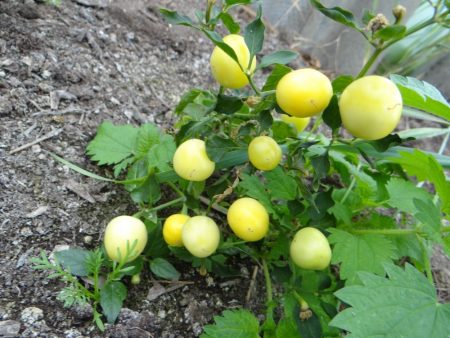
From sowing seeds to the beginning of the collection of ripe peppers - 135 - 150 days. Stable yield of about 180 - 250 g from one bush. It shows itself well in an open garden, greenhouse, house or apartment.
This variety is very suitable for the preparation of natural powder seasonings.
Dinosaur
Peninsular type. Well reveals the gamut of its taste when used fresh, pickled, in the recipe of dry seasonings. It differs from its brethren in fleshiness, the walls have a thickness of 4 - 6.5 mm. The weight of ripe pepper is about 95 - 100 g. The appearance of the fruit resembles a trunk, with the tip pointing up. It has a variety of colors: yellow, green, red.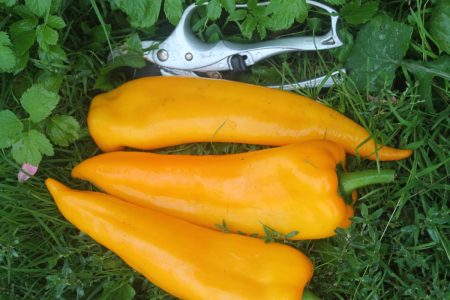
The bush of the plant is compact, 65 to 80 cm high. The Dinosaur is cultivated both in open and protected beds.Its yield is usually 6 kg per 1 sq. Km. m, or 1.5 - 2 kg per plant. Ripen usually in 110 - 120 days.
Unpretentious: it feels great with temperature fluctuations, with insufficient lighting and watering.
Alladin
But it is recommended to plant it only under open ground conditions. The growth of "Aladdin" usually does not exceed 50-60 cm. Usually it forms an acute-shaped fruit, in the form of a cone directed upwards. They have a variety of colors: dark purple, light green and rich red. The mission of Aladdin is universal.
It begins to actively bear fruit on 125 - 135 days from sowing seeds. It is preferable to plant seedlings. Planted in the ground according to the scheme: 3 - 4 bushes per square. m. The productivity of 1 bush - 3 - 4 kg.
Alexinsky
Grows in any temperature conditions: open ground, apartment, greenhouse or greenhouse. "Aleksinsky" is resistant to pest attacks, and weather fluctuations from + 10 degrees. Favorable time for sowing seedlings - February or March. Fruit ripening occurs within 145 - 150 days from sowing seeds. Just need to be prepared for a size of 1 m bush.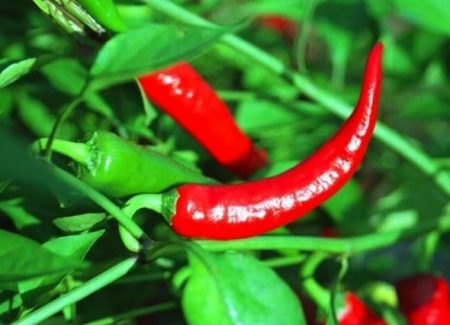
On the bush you can see fruits of different colors with an excellent aroma, with a tip directed to the top: bright green, yellow, bright red. Each weight is approximately 20-30 g. The width of the skin is not more than 3.5 mm. With good care, you can safely collect about 5 kg from 1 square. m
Many people prefer to eat it directly from the bush, and there are also fans who enjoy it in a pickled form. And from it you can get wonderful seasonings.
Bully
A peninsular type that is resistant to aphid attack, disease and weather extremes. "Bully" is recommended more for the northern inhabitants of our country.
On each bush, you can observe the simultaneous formation of fruits that have the shape of a trunk, green or red colors. Pulp 1 - 2 mm thick. On average, the mass of a mature fetus is 15–20 g. The “Zadira” bush is up to 70–80 cm.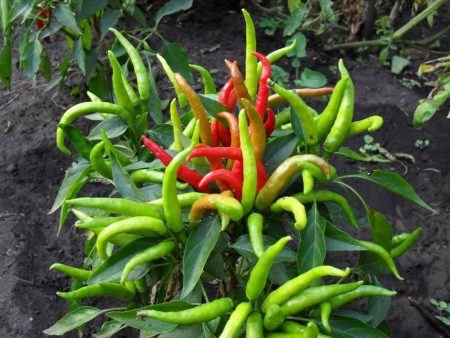
"Bully" grows quietly in any place, and in arid too, only he needs a large amount of light. The most favorable month for sowing seedlings is February. As the night temperature establishes its stability from + 10 degrees Celsius, it should be outside, thereby hardening. After 115 - 125 days after sowing, begins to bear fruit. In the process of growth, the plant needs timely cultivation, top dressing. If you follow the basic rules, you can achieve yields of up to 4 - 5 kg per 1 sq. Km. m
Falcon beak
These "comrades" are burning. They have a narrow conical shape. They have a light green and deep red color. The wall thickness is only 3 - 5 mm. Weight does not exceed 10 - 15 g. The bush grows to 70 - 80 cm. Perfect for the main ingredient for the preparation of seasonings and sauces for the winter.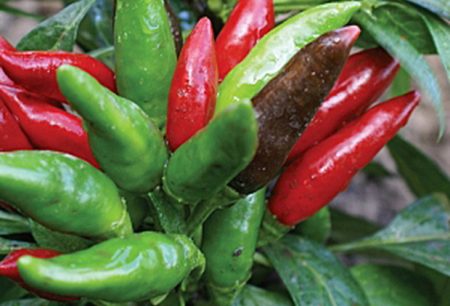
“Falcon Beak” is grown in any conditions: from an open garden to a home environment. Tolerates temperature fluctuations and drought. Fruiting usually begins after 115 - 125 days after planting seeds. Productivity is usually from 3 - 4.5 kg per 1 sq. Km. m
Bride
Early variety, ripens in 90 - 100 days. Forms a lot of very sharp fruits of red and yellow colors, with the tip pointing up. It looks beautiful, resembling a floral bouquet, and also smells. Peppers are small, do not exceed a weight of 6 - 8 g. The structure of the pulp is not more than 1 mm. The bush of the "Bride" is miniature, sprawling, leafy, about 20-30 cm. The yield is stable: about 150-250 g from one bush.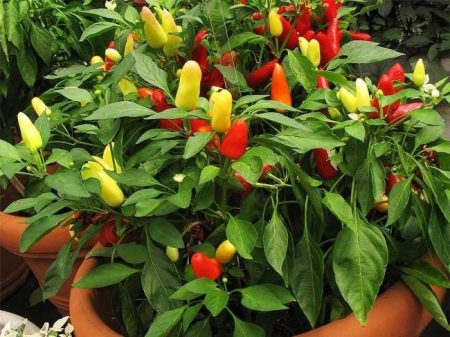
Culture feels great in an open garden, balcony or kitchen windowsill. More suitable for preparing powdered seasoning for culinary dishes.
So, hot peppers, whose fruits grow up, deserve the attention of a large number of gardeners.Since they combined an attractive appearance, unpretentiousness in cultivation, pleasant aroma and taste, and also benefit the entire human body.
Varieties of Sweet Peppers
Due to the substantial weight and thick structure of the pulp, it is already more difficult for sweet varieties to hold the ripe fruit end up. But there are always exceptions that will be described below.
Juliet
The bush is formed by dark green and brown - red peppers at the same time. The fruits are conical in shape, weighing 90-100 g. Juicy, wall thickness 5-6 mm. Neutral taste: neither sweetness nor bitterness.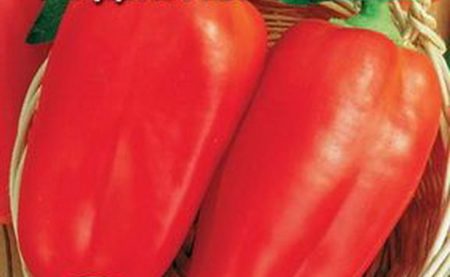
Planting "Juliet" can be on open or protected ground. It grows to 80 - 90 cm. They have an average ripening period: 125 - 135 days. On average, summer residents collect - 1.5 kg of crop per 1 sq. m
Boneta
It is a hybrid of sweet pepper that was created by Czech breeders. Ripe fruits are fleshy, with a rich sweet taste and a pleasant aroma. Thick pepper walls - 6 - 8 mm. One fruit weighs 250 - 450 g. They have a shape similar to a trapezoid. Bushes up to 60 cm. The fruit grows end up. Thanks to strong stems and foliage, they hold. Boneta feels good on the open ground. Within 80 - 90 days, as the seed sprouts, the fruits reach true ripeness. Fruits abundantly: 3 kg from the bush can be stably collected.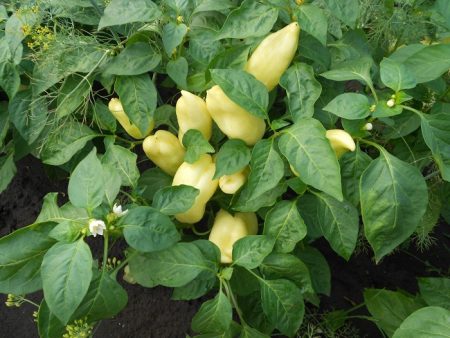
Dionysus
Attracts summer residents with external data of the fruits themselves with bushes. A bush grows 70 - 80 cm. The weight of one ripe fruit is 90 - 120 g. Thin walls are 5 - 6 mm in size. The shape resembles a prism. But the taste of the “Dionysus” is neutral: no bitterness, no sweets. Suitable for fresh use or stuffing.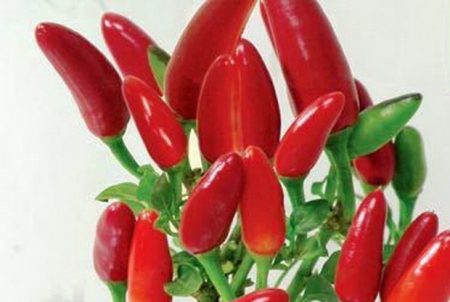
The culture grows well in open and protected areas of soil. Planting seeds for seedlings is recommended to be carried out in March or April. Fruits ripen usually within 125 - 135 days. Productivity from 1 sq. m - 5 - 6 kg.
Golden Pheasant
The variety is characterized by high productivity. Sweet and juicy fruits have a golden yellow color, rounded shape, weight about 300 - 350 g. The walls of the fruit are 1 cm thick. The height of the bush is 45 - 60 cm.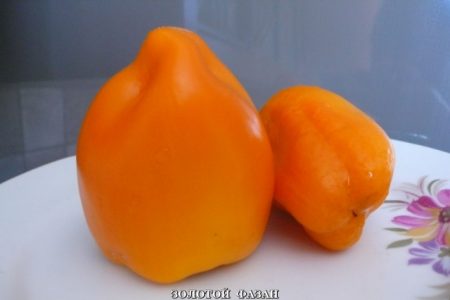
From the day the seeds were sown, peppers ripen in 125 to 130 days. When culturing, a standard seedling method is suitable. The plant loves moisture and warmth. Applying these conditions, you can achieve yields of 1 square. m - 10 kg. It is not recommended to fertilize with fresh manure, due to the increased content of nitrogen in it. This can lead to lower yields.
Salute
This view looks like a bouquet with tulips. The fruits are cone-shaped, with a sharp tip at the top. Sufficiently long 10 - 13 cm. Weight not more than 60 - 70 g. They have dark green, orange or red colors. The walls are thin - 1.5 - 2 mm.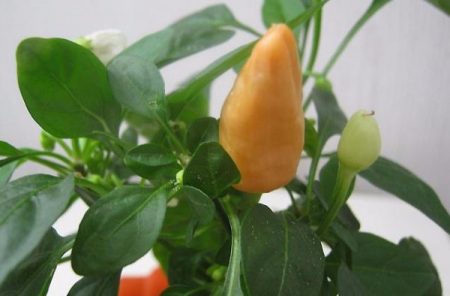
The plant is low - 20 - 30 cm. On the bush, you can collect fruits for 300 - 450 g. Grows anywhere. In 110 - 120 days, the variety usually reaches full maturity.
Conclusion
Due to its peculiar features, peppers with upward-growing fruits are a great alternative to other varieties. They find themselves perfectly for decorative purposes to decorate the interior of the living room. And also, they reveal themselves well in various dishes. These varieties are full of useful trace elements and vitamins, the use of which enhance health.
Reviews
Among the many reviews were noted such:
Polina: My family and I really love peppers. We plant all sorts: both sweet and spicy. We usually plant them on the open ground. We feed everyone the same. The first feeding is carried out in a phase of 2 sheets - in 1 liter of water I interfere with 0, 4 - 0, 5 ammonium nitrate, 1 g of potassium fertilizer and 2 - 3 g of superphosphate. The second in a couple of weeks - with a double dose of mineral fertilizers (nitrofoska 1 tbsp. L per bucket). We are collecting a stable crop, they do not get sick and are not attacked by pests.
Vincent: I am a big fan of peppers. I make top dressing with nettle infusion, which has not let me down yet (1 part of nettle, which was left for 2 days in 10 parts of water). For the entire season 1 - 2 times I use chicken droppings in a ratio of 1:10.I noticed such a feature that, with a lack of potassium, the leaves curl, forming a dry border. But with potassium you need to be careful, everything is in moderation. Gathered a good harvest, went to pickling, to fresh salads, even treated the neighbors. Everyone is happy.




 Calorie pepper stuffed with meat and rice - BZHU per 100 grams
Calorie pepper stuffed with meat and rice - BZHU per 100 grams Gorky pepper - the best varieties for open ground
Gorky pepper - the best varieties for open ground Hot pepper seeds - the best varieties for open ground and reviews
Hot pepper seeds - the best varieties for open ground and reviews Capsicum tincture for hair - how to use and reviews
Capsicum tincture for hair - how to use and reviews